
 Sujal Shah, Head of Fashion, IMG, India, shares his views and responsibilities on holding the reins of the Indian Fashion Industry. Before engaging with LFW he was the Head of Strategy and Planning at Brand Marketing India where he enhanced business development through innovative partnerships across international brands such as Gucci, Jimmy Choo, Bottega Venetta, Calvin Klein, French Connection and Tommy Hilfiger. Besides consulting for various fields he focused on Luxury brands and the HNI’s in the US and India. Last season, Sujal served as the Senior Advisor to IMG for LFW Spring/ Summer 2010 before taking full time employment as Head of Fashion for IMG, India recently.
Sujal Shah, Head of Fashion, IMG, India, shares his views and responsibilities on holding the reins of the Indian Fashion Industry. Before engaging with LFW he was the Head of Strategy and Planning at Brand Marketing India where he enhanced business development through innovative partnerships across international brands such as Gucci, Jimmy Choo, Bottega Venetta, Calvin Klein, French Connection and Tommy Hilfiger. Besides consulting for various fields he focused on Luxury brands and the HNI’s in the US and India. Last season, Sujal served as the Senior Advisor to IMG for LFW Spring/ Summer 2010 before taking full time employment as Head of Fashion for IMG, India recently.
What are the responsibilities that you hold as the Head Fashion IMG?
In the global perspective, India is an emerging and high potential country for IMG, its businesses and core competencies. In my role with IMG, a large part is devoted to the continued excellence in executing Lakme Fashion Week, which is jointly promoted by Lakme and IMG. Additionally, I am charged with looking for new opportunities to engage our expertise via new and innovative platforms or partnerships.
In my role with IMG, I also support the overall business beyond fashion in terms of new project evaluation and business development.
What are the changes or new proposals that you would put forward for the LFW?
LFW, as with any eminent property, requires continued enhancement and innovation to be in tune with the needs of the environment and maintain its position as a market leader. As we enter our second decade, we have introduced concepts such as Resort and alignment of seasons with the domestic buying cycle. As we move forward we will continue to look for ways to add value to our key stakeholders of designers, buyers, media, and sponsors.
Please elaborate on the decision of showcasing the current season on LFW ramp?
Lakmé Fashion Week consistently encourages the business of Indian fashion through various strategic and innovative endeavors. It is important to recognize the evolution of the Indian fashion industry and address the requirements of domestic buyers and designers head on. Reviewing the current scenario and the need of the hour, the upcoming Lakmé Fashion Week decided to commence a month prior than previous seasons and focus on the current/upcoming season.
Unlike the international market, in India fashion retailers are requesting delivery within 60 days, shortening the production cycle. LFW’s strategic change reflects the Indian market’s ability and desire to respond quickly and service its customers closely to the season and allows designers to take their merchandise to their customers immediately after the show from the ramp to the rack.
What steps would you take to ensure an increase in the buyers list?
While an increase in buyers is a plus for our event and designers, the key is to continuously improve the quality of buyers coming to the event. Perhaps even more important is the need to look for new and more ways to facilitate the dialogue and interactions between designers and buyers. Over several seasons we will implement a long term strategy aimed at improving the designer – buyer relationships and ultimately, business.
LFW has always been associated as Bollywood Fashion, has this image worked for or against the fashion week?
Lakme Fashion Week is a trade event and is about promoting talent and creating business opportunities for designers. In the recent past, designers have been noticed and have had an opportunity to design for films through this platform; today their work has given them visibility in the film fraternity and supported their business growth. We are happy that these designers are able to leverage every bit from the platform.
What are the short listing criteria for new and upcoming designers?
Each season, LFW receives applications for GenNext and Emerging designers from all over India. We consistently focus on quality and not at increasing just the numbers. A panel of jury judges the applicants work on quality, innovation, creativity, marketability and commercial viability.
Why Suneet Varma as the Grand Finale designer?
To this Mr.N. Rajaram, Vice President, Lakmé adds “Suneet is one of the most sought after designers and a name to reckon with in the fashion industry. He represents the perfect blend of Summer Resort and a flair for business of fashion, clearly being the best choice for the Lakmé Grand finale.”
Any other established designer who has shifted base with LFW this time?
Designers participate in Lakmé Fashion Week because they want to showcase their work to a larger audience, increase business and reach out to the global market. LFW welcomes everyone who meets the participating criteria and will continue to do the same.
How is the future of fashion in India and how do you plan to take it forward?
From and LFW perspective, as a pioneer, innovator and leader in promoting the business of fashion in India, Lakme Fashion Week will look forward to different avenues of redefining the future of fashion. One such example is our introduction of a formal Resort platform for Indian designers. Resort has been a well defined season internationally for years. Indian designers have a natural proclivity to Resort given the climate and the fabrics in India. Recognizing the immense talent in the country, LFW has committed to offering a yearly Summer/Resort event which serves as a powerful platform to increase the exposure of Indian designers to the international markets. LFW’s focus on this style in the coming season and years will now put India on the global map and act as a catalyst to attract more international buyers.
In my broader IMG Fashion role, I have the opportunity to explore new, innovative platforms and commercial relationships. To the mass markets, fashion has an aspirational appeal. I think there will be interesting ways to take fashion directly to this segment.

 Sujal Shah, Head of Fashion, IMG, India, shares his views and responsibilities on holding the reins of the Indian Fashion Industry. Before engaging with LFW he was the Head of Strategy and Planning at Brand Marketing India where he enhanced business development through innovative partnerships across international brands such as Gucci, Jimmy Choo, Bottega Venetta, Calvin Klein, French Connection and Tommy Hilfiger. Besides consulting for various fields he focused on Luxury brands and the HNI’s in the US and India. Last season, Sujal served as the Senior Advisor to IMG for LFW Spring/ Summer 2010 before taking full time employment as Head of Fashion for IMG, India recently.
Sujal Shah, Head of Fashion, IMG, India, shares his views and responsibilities on holding the reins of the Indian Fashion Industry. Before engaging with LFW he was the Head of Strategy and Planning at Brand Marketing India where he enhanced business development through innovative partnerships across international brands such as Gucci, Jimmy Choo, Bottega Venetta, Calvin Klein, French Connection and Tommy Hilfiger. Besides consulting for various fields he focused on Luxury brands and the HNI’s in the US and India. Last season, Sujal served as the Senior Advisor to IMG for LFW Spring/ Summer 2010 before taking full time employment as Head of Fashion for IMG, India recently. 

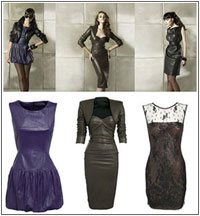 The other day I went shopping for an aubergine leather trench coat, and the next question asked to me, are you on a Europe tour. Such is the existence of leather garments in India that it accounts for a fraction nearing zero of the entire fashion buisness. Fashionfad.in goes hunting for the demand and supply confusion working in the domestic high fashion leather garment industry.
The other day I went shopping for an aubergine leather trench coat, and the next question asked to me, are you on a Europe tour. Such is the existence of leather garments in India that it accounts for a fraction nearing zero of the entire fashion buisness. Fashionfad.in goes hunting for the demand and supply confusion working in the domestic high fashion leather garment industry.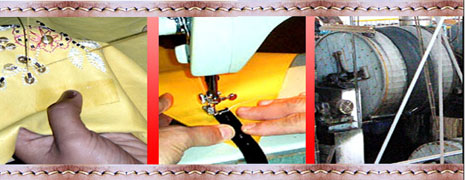

 Kimaya came into existence in 2002 and overtook the Indian fashion industry with a graceful precision. Pradeep Hirani and Neha Hirani noticed seven years back the fulcrum of fashion moving towards India and took no time in conceiving their conceptual baby Kimaya in Mumbai, a Fashion House that within no time has become the leading Haute Couture Destination.
Kimaya came into existence in 2002 and overtook the Indian fashion industry with a graceful precision. Pradeep Hirani and Neha Hirani noticed seven years back the fulcrum of fashion moving towards India and took no time in conceiving their conceptual baby Kimaya in Mumbai, a Fashion House that within no time has become the leading Haute Couture Destination. 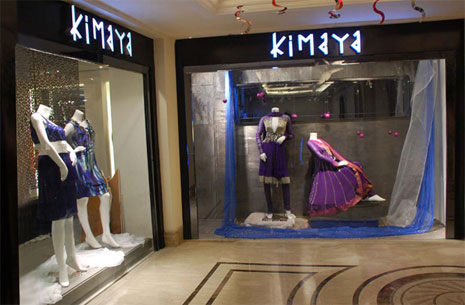

 tudio.
tudio. 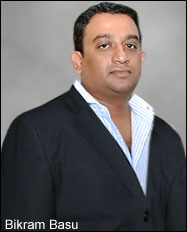 The name sketches a larger than life image and has risen way above to be merely recognized as a product.
The name sketches a larger than life image and has risen way above to be merely recognized as a product. 
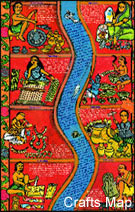 Walking down the narrow lanes of Shahpur Jat, Delhi, takes you on a ride through the backbone of Indian fashion industry which has been growing at a reverberating pace. The locality here houses craftsmen from West Bengal, Gujarat, Madhya Pradesh and all corners of the country settled with their sharpened craft tools that have gradually developed into small manufacturing units themselves. These crafts people have been providing the fine zardozi, ari work and all the glitter and shine that sashay down the ramp for the designers of our fashion fraternity.
Walking down the narrow lanes of Shahpur Jat, Delhi, takes you on a ride through the backbone of Indian fashion industry which has been growing at a reverberating pace. The locality here houses craftsmen from West Bengal, Gujarat, Madhya Pradesh and all corners of the country settled with their sharpened craft tools that have gradually developed into small manufacturing units themselves. These crafts people have been providing the fine zardozi, ari work and all the glitter and shine that sashay down the ramp for the designers of our fashion fraternity. 

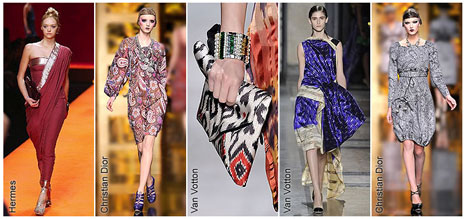

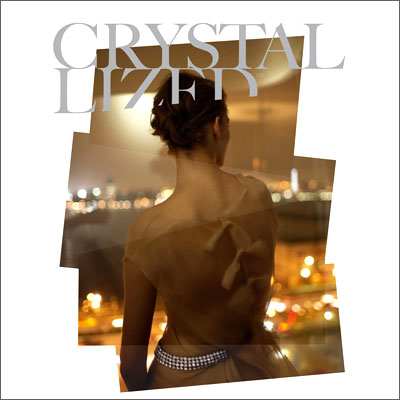 The latest trend alert, “If you are wearing diamonds you should never stand next to me,” says Sanjay Sharma, Country Head Crystallized Swarovski. This statuary warning relates to an incident when Rohit Bal wearing an exquisite diamond brooch was standing next to Sanjay and a lot of people complimented him for his diamond brooch taking it to be a Swarovski creation.
The latest trend alert, “If you are wearing diamonds you should never stand next to me,” says Sanjay Sharma, Country Head Crystallized Swarovski. This statuary warning relates to an incident when Rohit Bal wearing an exquisite diamond brooch was standing next to Sanjay and a lot of people complimented him for his diamond brooch taking it to be a Swarovski creation. r Swarovski from getting itself attached to designers individually and survive an overtly price sensitive Indian market to achieving a position where a brand name Crystallized Swarovski becomes generic for crystallized elements across the planet. It has been associated with designers like JJ Valaya, Rohit Bal, Suneet Varma, Manish Arora from their first showcase and till date when the relationship has crossed boundaries of being a mere element supplier and client.
r Swarovski from getting itself attached to designers individually and survive an overtly price sensitive Indian market to achieving a position where a brand name Crystallized Swarovski becomes generic for crystallized elements across the planet. It has been associated with designers like JJ Valaya, Rohit Bal, Suneet Varma, Manish Arora from their first showcase and till date when the relationship has crossed boundaries of being a mere element supplier and client. e no bling Rajesh Pratap Singh, Crystallized Swarovski steps into the fashion jewellery section for India. Sanjay says, “Growing from a primarily marriage jewellery the market in India has graduated to witness a renaissance in fashion jewellery with more and more women going out for work and need to dress accordingly.” Swarovski forecasts an unexpected breakthrough in fashion jewellery with the growing demand of dressing for everyday occasion, breaking the barriers that used to place jewellery in lockers. Though yet again it is working with a sector which is still a cottage industry in India, Crystallized Swarovski is taking a 360 degree review of the potential and kinetics of the market catalyzing various associations with jewellery designers, design colleges, craftsmen and workshops.
e no bling Rajesh Pratap Singh, Crystallized Swarovski steps into the fashion jewellery section for India. Sanjay says, “Growing from a primarily marriage jewellery the market in India has graduated to witness a renaissance in fashion jewellery with more and more women going out for work and need to dress accordingly.” Swarovski forecasts an unexpected breakthrough in fashion jewellery with the growing demand of dressing for everyday occasion, breaking the barriers that used to place jewellery in lockers. Though yet again it is working with a sector which is still a cottage industry in India, Crystallized Swarovski is taking a 360 degree review of the potential and kinetics of the market catalyzing various associations with jewellery designers, design colleges, craftsmen and workshops. 
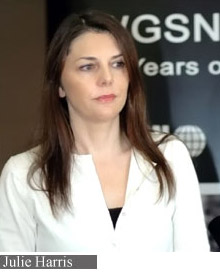


 An exclusive FASHIONFAD.in tete-a-tete with Didier Grumbach – president of the Fédération Française de la Couture, du Prêt à Porter des Couturiers et des Créateurs de Mode (aka the Chambre Syndicale) the most important organisation in the French fashion industry. Grumbach last attended the WIFW in 2007 and has returned to WIFW ss’10 after almost two years. De facto (in fact) Grumbach was the one who took Manish Arora, Rajesh Pratap Singh and Anamika Khanna to the Paris Fashion Week. When the Pope of the fashion industry himself comes down to India attending our fashion event it definitely sets the buzz around. So we go ahead to ask the authority himself about our fashion challenges-
An exclusive FASHIONFAD.in tete-a-tete with Didier Grumbach – president of the Fédération Française de la Couture, du Prêt à Porter des Couturiers et des Créateurs de Mode (aka the Chambre Syndicale) the most important organisation in the French fashion industry. Grumbach last attended the WIFW in 2007 and has returned to WIFW ss’10 after almost two years. De facto (in fact) Grumbach was the one who took Manish Arora, Rajesh Pratap Singh and Anamika Khanna to the Paris Fashion Week. When the Pope of the fashion industry himself comes down to India attending our fashion event it definitely sets the buzz around. So we go ahead to ask the authority himself about our fashion challenges-